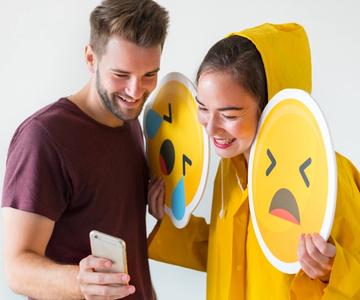Visual Storytelling: Unleash Your Brand's Potential Through Compelling Narratives
In the fast-paced digital world, capturing your audience's attention is a challenge. Enter visual storytelling – a powerful tool that goes beyond words and statistics to forge emotional connections and leave a lasting impression.
Visual narratives can transform your brand, but they require a strategic approach. This guide will walk you through the process, whether you're leveraging your in-house team, partnering with an agency, or somewhere in between.
#### Why Visual Storytelling Matters
Visual storytelling is a powerful tool that transcends words and statistics to create emotional connections and leave a lasting impression, offering enhanced engagement, emotional connection, simplified communication, and increased shareability.
**Enhanced Engagement:** Images, videos, and infographics are processed faster and remembered longer than text alone. This translates to higher engagement on social media, websites, and even in-person presentations.
**Emotional Connection:** Stories trigger emotions, making your brand more relatable and memorable.
**Simplified Communication:** Complex ideas become digestible when presented visually, helping your audience grasp your message effortlessly.
**Increased Shareability:** Compelling visuals are more likely to be shared, expanding your brand's reach organically.
#### Creating Your Visual Narrative
To craft a compelling visual narrative, define your audience, identify your message, and create a storyboard with high-quality visuals, motion elements, and music.
**1. Define Your Story:** What core message do you want to convey? What emotions do you want to evoke? This could be your brand's origin story, the impact of your product, or the values that drive you.
**2. Choose Your Format:**
**Video:** Excellent for capturing attention and conveying complex narratives. Consider testimonials, product demos, or behind-the-scenes glimpses.
**Infographics:** Perfect for simplifying data and statistics into easily understandable visuals.
**Sequential Images:** Ideal for social media, telling a story in bite-sized pieces across multiple posts.
**3. Craft Your Visuals:** Ensure your visuals align with your brand identity. Use high-quality images, consistent colors, and professional design elements.
**4. Distribute Strategically:** Share your visuals across relevant platforms where your target audience spends their time.
#### Sharing Your Visual Stories
Once you've created your compelling visual narratives, it's time to share them in all the right places to maximize their impact and reach your target audience.
**Social Media:** Platforms like Instagram, TikTok, and Facebook thrive on visual content. Share your stories to engage your followers and reach new audiences.
**Website and Blog:** Elevate your content with embedded videos and infographics. Bring your brand story to life on the pages where visitors learn more about you.
**Email Marketing:** Incorporate visuals into your emails to boost open rates, click-throughs, and overall campaign effectiveness.
**Paid Advertising:** Use visually compelling ads to capture attention and drive conversions on platforms like Google, Facebook, and LinkedIn.
#### The Importance of Ongoing Optimization and Measurement
Visual storytelling isn't a "set it and forget it" strategy. It requires continuous refinement and data-driven insights.
**Set Measurable KPIs:** Define clear goals for your visual storytelling efforts. Do you want to increase brand awareness, drive website traffic, or boost sales?
**Track and Analyze:** Monitor key metrics like engagement rates, click-throughs, conversions, and social media shares. Use this data to identify what's working and what needs improvement.
**Optimize and Iterate:** Experiment with different formats, platforms, and messaging to refine your approach and maximize results.
Use these metrics to refine your approach and maximize the impact of your visual content.
#### Building Your Visual Storytelling Dream Team
There are two primary paths to crafting your visual narratives:
**In-House Team:** If you have a talented marketing or creative team, tap into their expertise. Collaborate to brainstorm ideas, develop scripts, design graphics, and execute your vision.
**Partner Agencies:** If resources or bandwidth are limited, consider partnering with a creative agency that specializes in visual storytelling and can help you strategize, create, and implement campaigns that align with your brand goals.
#### Ready to Unleash Your Brand's Visual Power?
At Yo Marketing, we specialize in crafting visual narratives that resonate. From developing a creative strategy to executing across various platforms, we can help your brand tell its story in a way that captivates and converts.
Contact us today to learn more about how we can help unleash your brand's visual power.
[](/contact/)























